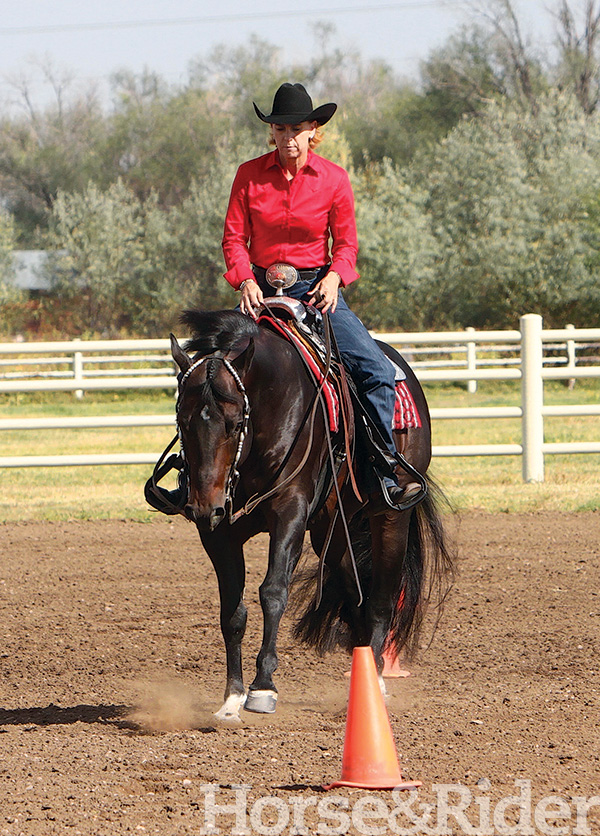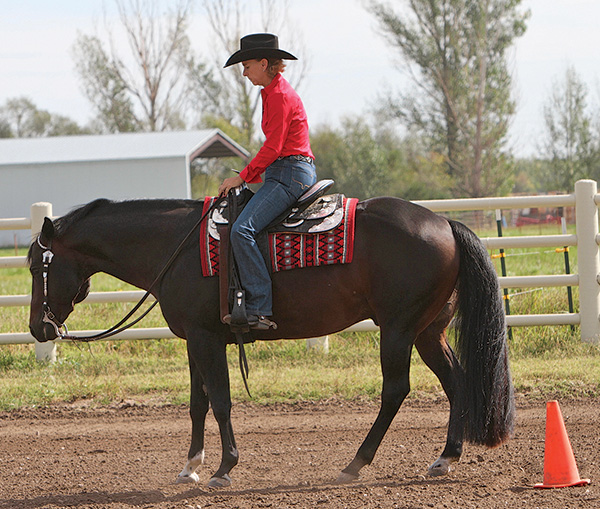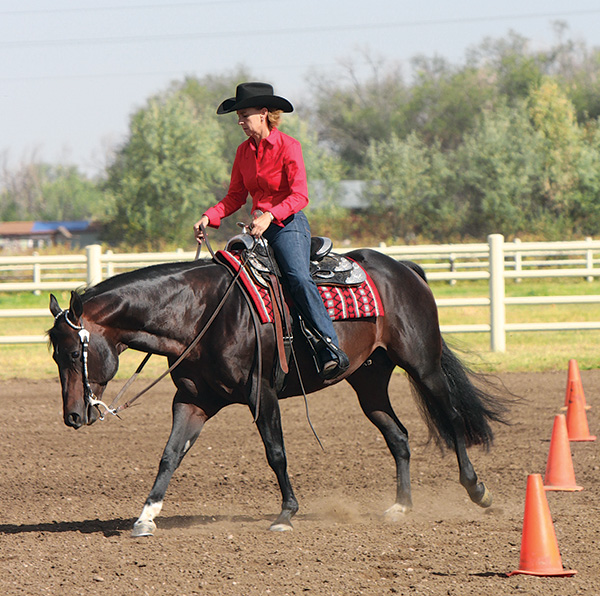Q I’ve recently purchased a new all-around gelding that I show in the Western riding and horsemanship at Quarter Horse shows. I’ve taken him to a few horse shows now, and I’ve noticed whenever there’s a flying lead change in a horsemanship pattern, or when we go down the line in Western riding, he knows where to change and tries to anticipate it. What can I do to make him listen to my cues and keep him from changing leads without my asking?

SARA MAYES, Ohio
A Lead-change anticipation is something you might have to work on when you’re showing a seasoned all-around horse that’s been competing for some time. It’s easy for a horse to start anticipating a change, especially in Western riding, because there are only a few patterns and essentially you’re changing leads in a similar spot each time. Eventually he learns those patterns, knows where he’s supposed to change, and tries to do it on his own.
Here I’ll discuss a few different ways you can approach working on lead-change anticipation at home or warming up at your next show.
Before You Practice
Before you begin any lead-change exercises with your horse, try doing something as simple as leaving your cones out in the arena every time you ride. This works for both Western riding and horsemanship anticipation. Having cones out in the arena allows your horse to get comfortable being around them, no matter what you’re working on. Even on days when you’re not practicing Western riding or horsemanship, ride through and around them. This will help him stop associating lead changes with cones and allow him relax when he’s near them.
Stop Correctly
Stopping a horse that’s trying to change leads on his own is tricky, but can be a useful correction if executed properly. It’s extremely important that when you stop your horse it’s not a punishment, but rather positive reinforcement. If you jerk on your horse and slam him into the ground, you’re going to scare him and he’ll remember it as a negative experience. This means you’ll spend an exponential amount of time trying to regain his confidence, and could potentially create new problems.

To successfully stop your horse, start by going down the Western riding line like you normally do when you’re practicing. When you feel your horse start to anticipate, go ahead and gently stop him before he changes. If he stops on his front end, or the stop just isn’t very clean, softly back him up a few steps and let him settle. After you settle, walk out of the line and pick up your lope elsewhere in the arena.
The next time you approach the line, don’t change any leads. If you stop him too many times he’ll start to anticipate the stop. Instead, make him lope through the line on the same lead, and focus on keeping the same pace without him elevating his shoulders or top line.
Change It Up
Don’t be afraid to mix things up when you’re practicing. You don’t need to change every lead every time you go down the line. There are a few different exercises you can do to change how you warm up or practice at home.
Exercise 1: Skipping changes
Try only changing one or two leads, so he has to rely on your cue to tell him when it’s time to change. First lope the entire line on the same lead; make him focus on what you’re telling him to do, and work on keeping a steady rhythm. Don’t be afraid to go down the line multiple times without changing. It’s about getting him to relax and listen to your cues, rather than him focusing on where he is in the cones.
Once he starts to relax and keeps a steady pace, add one or two changes to the line. Change the first lead in the line, then skip the middle two, and change the last one. Continue challenging him by switching up where you change your leads. You can also skip the first two and change the last two, or just pick one spot to change leads in the line. This is something you can do both at home and while warming up for your class at a horse show.
Exercise 2: Loping a circle
When you feel your horse start to elevate his shoulders and try to change without you, take him off the line and circle the cone. Continue to circle that cone until you feel his attention is back on you, and not on the change. After he relaxes, continue back down the line.
This exercise can also be done at a counter canter. If you’re loping on your left lead and your horse wants to go to the left, go ahead and counter canter a circle to the right until he softens. Another benefit to counter cantering is you’re going to have a little more contact with your horse, which will help him accept what you’re working on and focus on what you’re asking, rather than changing leads.
Exercise 3: Change leads at the cone
The last exercise you can do to help your horse from anticipating is having him wait to change leads until you’re past the center of your two markers. I even recommend changing leads once you’re at the next marker. Do this down your entire line. You can also practice this with a horse that’s anticipating a change in the horsemanship. When practicing your horsemanship pattern and there’s a lead change, wait to change leads a few strides more than what your pattern calls for so he doesn’t learn where he’s supposed to change. I wouldn’t advocate changing leads early for horsemanship or Western riding, because that’s a habit that your horse will pick up quickly, and it’ll only make him anticipate changing leads more.

Leslie Lange, Greeley, Colorado, owns and operates T&L Quarter Horses with her husband, Tom, and is an AQHA and NSBA judge. She’s trained and shown multiple world champions in all-around events, and was named the 2003 AQHA Professional Horsewoman of the Year.






